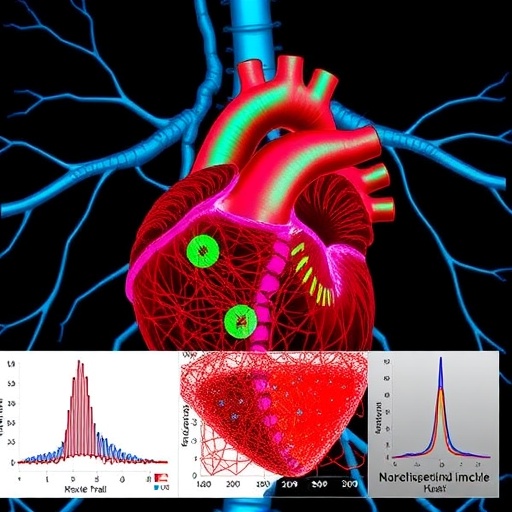Study broadens look at how phthalates affect sperm and embryo development

Credit: UMass Amherst
A cross-disciplinary team of scientists, led by University of Massachusetts Amherst environmental epigeneticist Richard Pilsner, will use a three-year, $1.6 million grant from the National Institute of Environmental Health Sciences (NIEHS) to expand research into the impact of phthalate exposure on male fertility.
The three-year grant is part of the NIEHS initiative known as ViCTER (Virtual Consortium for Translational/Transdisciplinary Environmental Research). The program aims to stimulate unconventional partnerships among environmental health scientists in an effort to accelerate breakthroughs in research.
The new award’s co-investigators are reproductive biologists Pablo Visconti, a UMass Amherst professor of veterinary and animal sciences, and Sarah Kimmins, associate professor and Canada Research Chair in Epigenetics, Reproduction and Development at McGill University in Montreal.
Phthalates are ubiquitous endocrine-disrupting chemicals found in plastics and personal care products, such as deodorant and shaving cream. Virtually all people in the U.S. have some level of phthalate exposure.
“This is one half of the equation that has been largely overlooked,” says Pilsner, associate professor of environmental health in the School of Public Health and Health Sciences.
“There’s been an overemphasis on female reproductive health and environmental exposure, mainly because the women are gestating the baby for nine months. But male exposure has been shown to increase couple’s time to pregnancy regardless of female phthalate exposure.”
The new grant amplifies the Pilsner Lab’s ongoing research, in both human and mice models, into the influence of phthalate exposure on sperm epigenetics and embryo development, which is supported by two other NIEHS grants totaling $5 million. The epigenome represents the chemical changes to DNA and histone proteins that affect gene expression and can be passed on to offspring but don’t change the DNA sequence.
“We’ll be able to look at all three epigenetic mechanisms – DNA methylation, histone modifications and small noncoding RNA regulation – to build a roadmap, or epigenetic profile, of how phthalates are influencing sperm epigenetics and subsequently influencing reproductive success,” Pilsner says.
The researchers will use samples from Pilsner’s ongoing Sperm Environmental Epigenetics and Development (SEED) study, a collaboration with Baystate Medical Center’s in vitro fertilization (IVF) clinic. SEED data points to specific anti-androgenic phthalates that are associated with sperm DNA methylation and diminished embryo quality.
Each researcher will focus on one of three aims that are “interdependent and synergistic.” Pilsner will examine the effects of phthalate exposure on small noncoding RNA in the extracellular vesicles (EVs) of seminal plasma. EVs are tiny components secreted by cells. They contain RNA and proteins that are transferred to other cells, allowing cell-to-cell communication.
“It’s been shown that small noncoding RNA is very important for early life development and getting the embryo up to speed,” Pilsner says. “I’ll be looking at how phthalate exposure could be modifying the RNA in the EVs and how that affects embryo development.”
Kimmins, a leading expert in sperm chromatin, will look at histone methylation in sperm. She’ll locate where histone levels are altered in the genome of mice and men and link the findings to semen and embryo quality, among other outcomes. “We have already determined that histone signatures in sperm are responsive to paternal environmental, such as diet, and we look forward to determining how they respond to phthalate and if they are connected to fertility,” she says.
The Visconti Lab will focus on the impact of adult mouse exposure to the phthalates DEHP and DBP and their mixture on sperm capacitation, or the physiological changes that must occur for sperm to penetrate and fertilize an egg, and the subsequent embryo development. “As part of this cross-disciplinary research, by using an ongoing mouse model of preconception phthalate exposure, we will build upon Dr. Pilsner’s recent findings showing that preconception paternal anti-androgenic phthalate exposures are associated with diminished blastocyst quality in humans undergoing IVF,” Visconti explains.
The research team concludes, “Taken together, our ViCTER consortium will provide a paternal perspective on reproductive health by identifying epigenetic signatures associated with phthalate exposures, altered sperm function and clinical outcomes – with the overarching outcome to provide better preconception advising and/or diagnostics for couples.”
###
Media Contact
Patty Shillington
[email protected]
305-606-9909





